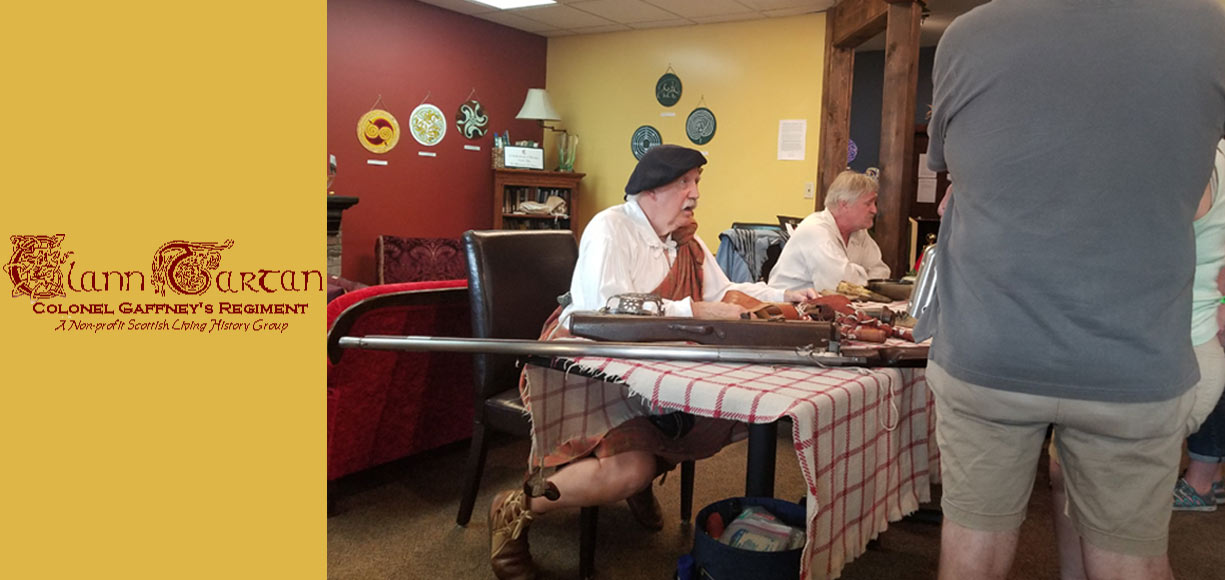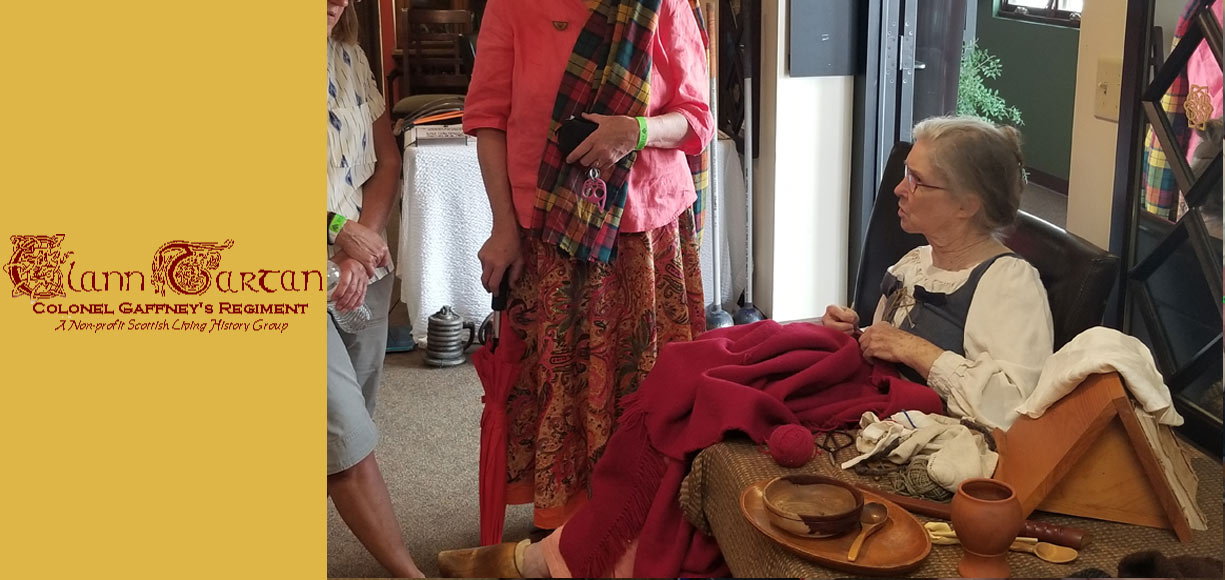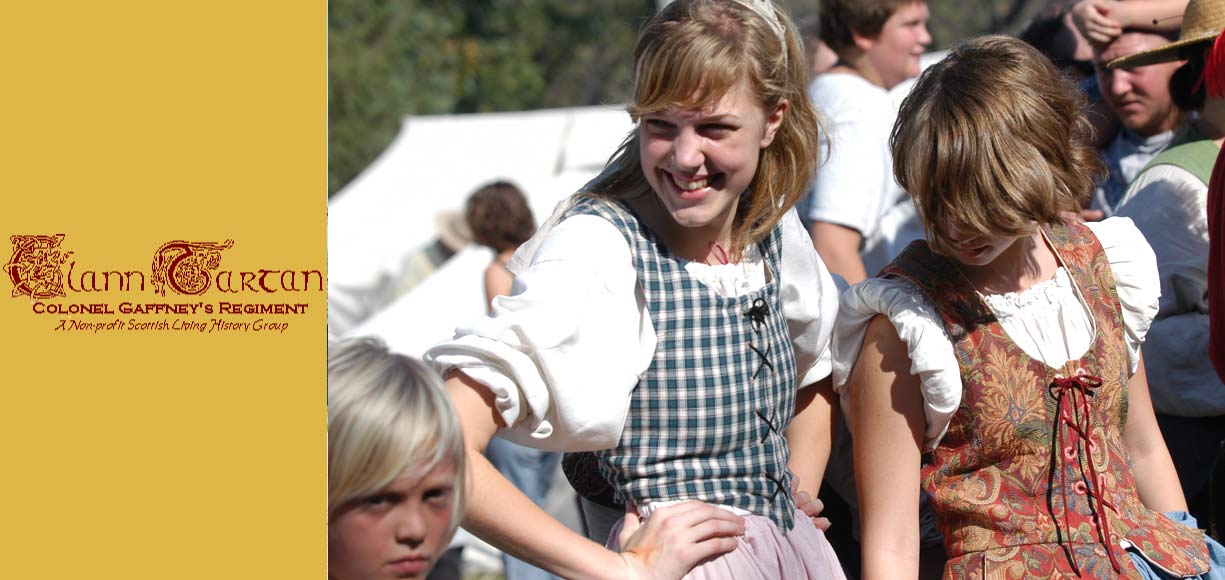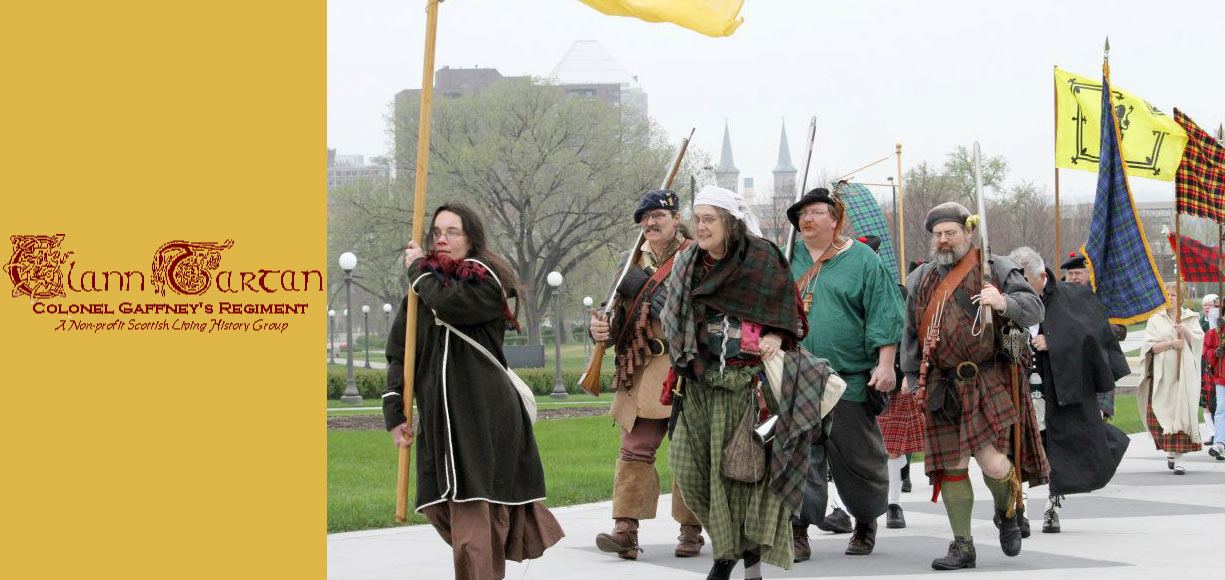Quick Links:
What is Clann Tartan?
Historical Background
You're in Scotland. The year is 1630, and Gustavus Adolphus is recruiting Scottish men to fight in his war against Germany. The ensuing bloody years will become known as the Thirty Years War, and 20,000 - 30,000 Highland Scots will fight in this lengthy conflict. Military camps are springing up all over Scotland, and one Colonel Gaffney establishes a regimental camp of Scots mercenaries. This camp becomes his base of operations for the recruitment and training of Scottish soldiers to be shipped overseas to fight - and possibly lose their lives - for the Swedish king.
We're Living History!
We are a non-profit cultural, educational, historical, recreational and social group founded in 1987 and based in Minneapolis/Saint Paul, Minnesota. We are dedicated to making history of use to the public and in the lives at our members through education and social activities. LIVING HISTORY is a large part of our effort. Clann Tartan appears and performs at many historically based events, providing historical interactions that not only please crowds, but educate people on the important roots of our country's Scottish forebears.
We are a "portable historic site" that portrays the recruiting camp of a military unit, Colonel Gaffney's Regiment, and the sutlers, suppliers and campfollowers of a 17th century army. Our regiment is a detailed recreation of a Scottish mercenary army that fought throughout Europe in the 16th and 17th centuries
Why Scottish History of this Period?
We represent Scottish history and culture before the failed rebellions against the English. After the 1745 rebellion and the Battle of Culloden Moor, much of the ancient clann system was destroyed by the Succession Acts, the transportation of prisoners to the colonies, and the cultural repression and devastation invoked by the English. Wearing the kilt and even playing the bagpipes was outlawed for nearly 40 years as a means of breaking the spirit of the rebellious Scots. The Highland lairds, no longer needing private armies, lost their sense of responsibility for the clansmen, driving them off their land so that it could be used for grazing sheep. Scottish culture became "fashionable" during the 19th century, and as a result, much of Scottish history and lore is in fact merely Victorian fabrication and romanticism as encouraged by the likes of Sir Walter Scott. Tartans were redesigned and ascribed to specific clans because the old patterns and dying techniques had been forgotten. Today, devotion is given to tartan patterns that would have been unrecognized by any clansman at Culloden.
Much was lost, and a culture was nearly destroyed. We, the members of Clann Tartan, dispel the myths and misconceptions of Scottish history and accurately recreate a slice of lost history and culture, thereby preserving it in the hearts of all who share the experience with us.
Why Mercenaries?
During the 16th and 17th centuries, tens of thousands of Scots fought as mercenaries (the professional soldiers who ere part of an independent company or regiment serving under contract for pay in a foreign army) all across Europe. From the Scottish Brigade that served the Low Countries for 300 years, to the regiments serving in Poland, and the Scottish officers fighting under Peter the Great, one of Scotland's largest exports has been fighting men. During the 30 Years War (1618-1648), 20-30,000 Highland Scots fought for Gustavus.
Mercenaries were a part of many armies during the 16th and 17th Centuries when many kings were not allowed to keep permanent, standing armies. Standing armies were feared by the nobles and growing merchant classes who thought it gave the ruler too much power to have an army ready at all times. In most countries, the land reserves or militia could be called up when a country was in danger.
Owners of Estate were required to finance the reserve troops. But districts would often claim some excuse, too much/little rain resulting in poor crops, suffered plague, or fire, so as not to pay their full share. Thus, even if the reserves were called, they might lack proper money and supplies.
The reserves themselves were made up of commoners. Up-rooted from their workshops and farms, they were poorly trained, and so slow to rally that they occasionally missed the battle altogether. They were also known to scatter and run home before the end of the battle. Mercenaries, therefore, provided a solution to the problems of the militia. Landowners were more willing to pay for mercenary troops since they did not take local men from the crops and economy. In addition, mercenaries meant trained and seasoned soldiers.
Scotland's History is More Than Kilts and Bagpipes
Music & Dance
Then, as now, music is an important part of our daily lives, and our musicians and dancers constantly add new songs to their repertoire. Visitors to our encampment will hear music ranging from 17th century fife & drum calls to traditional folk songs.
Crafters & Artisans
Spinning wool, wood turning, sewing, and black smithing are just a few of the trades you may see members of our group demonstrating. During the time period that we portray, much had to be accomplished every day to keep up with the demands of the military. There was very little time to rest until after the evening meal, and even children had specific jobs such as fetching wood and water, or working the drop spindle to make yarn for weaving. It would normally have taken three people spinning yarn just to keep one weaver busy!
Cooking
Authentic cooking over an open pit. We really do eat what we cook and most of our meals are historically correct, such as our annual haggis cooked each spring. We use period recipes - but you'll need to enlist with our captain to get a taste. If you had joined our camp as a common soldier during the time we portray, your daily rations would have been 14 pounds of bread, 4 pounds meat, 3 pounds cheese, 1 pound of butter, and 1 quart of beer. This may sound like a huge amount of food, but this was considered the "ideal" amount and you would have had to use this food to feed your women and children as well.
Getting Involved
Our philosophy is to keep the living history experience as accessible as possible, both for our participants and the public. The idea is to blur the line between participant and observer and thereby provide a high-quality educational experience as well as recruit new members. We do this by providing hands-on opportunities for the public; trying crafts of the period; learning a Scottish dance; even dressing in a great kilt. Our members are encouraged to have experience in all activities from firing a matchlock, spinning wool, to cooking a meal over a fire. The goal is to have all members capable of being experienced historical interpreters of all activities that the visiting public might see in our camp, making for an enjoyable experience for everyone involved, allowing us to both educate and entertain.
Would you like to "enlist"? Check our FAQ, write us for more information, or go here to join.
Inquiries about having Clann Tartan appear at your school, festival or other history related event can be made through our feedback page as well.






